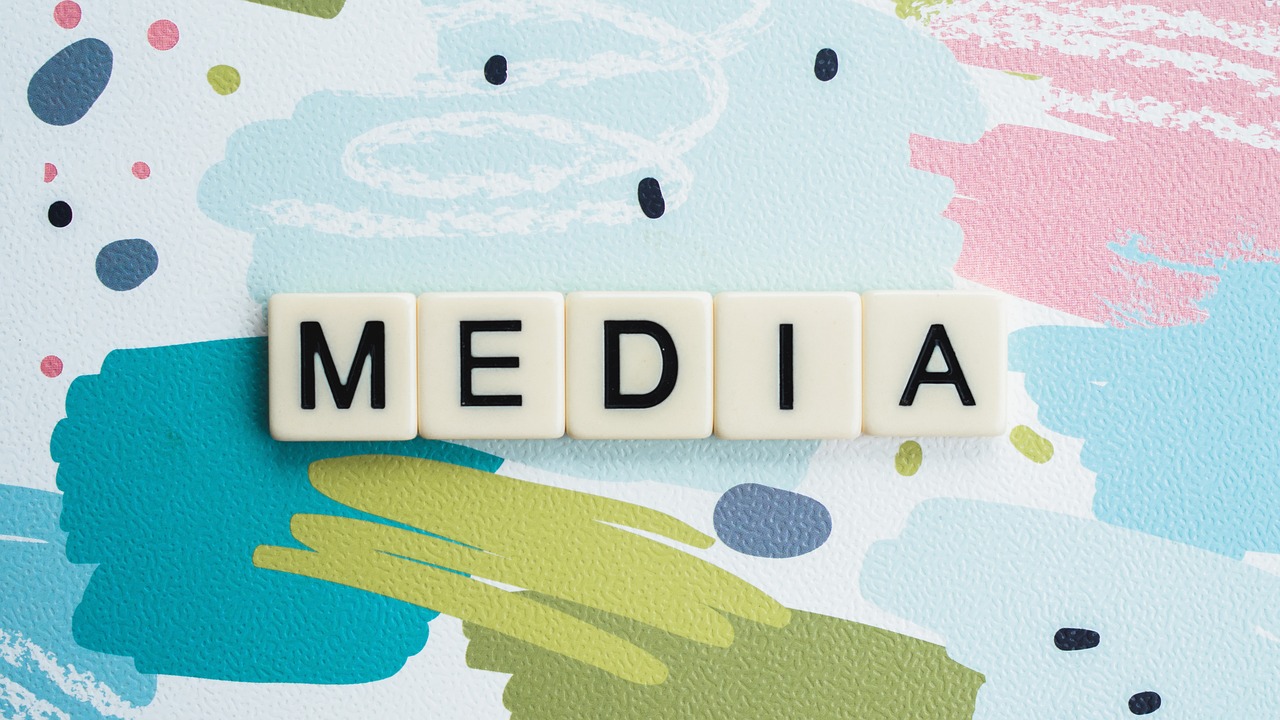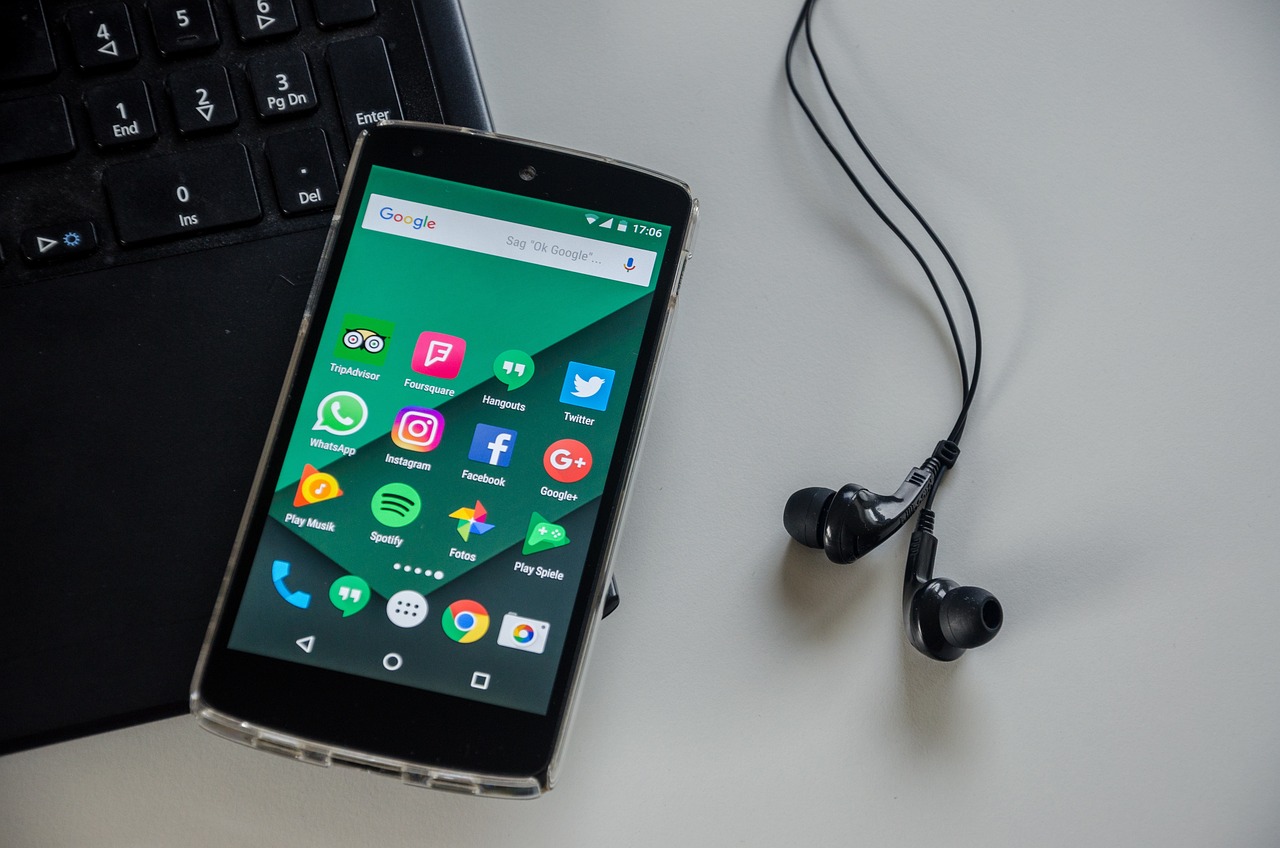How to Keep Your Work Life and Personal Life Separate on Social Media?
In today's digital age, social media plays a pivotal role in our daily lives, serving as a platform for both personal expression and professional networking. However, the challenge arises when we try to navigate the fine line between our work and personal lives. How can we ensure that the content we share reflects our professional image without compromising our personal privacy? This article will explore effective strategies to maintain a clear boundary between these two realms on social media, ensuring that you can enjoy the benefits of both without the risks of overlap.
Recognizing the significance of keeping work and personal lives distinct on social media is crucial. Imagine posting a casual photo from a weekend party, only to find out that your boss or potential employer has seen it. Yikes! Such situations can lead to misunderstandings and might even tarnish your professional reputation. By maintaining a separation, you not only protect your image but also create a safe space for personal expression. It’s like having two different stages: one for your professional performance and another for your personal life—each with its own audience and context.
One of the most effective steps in maintaining boundaries is creating dedicated social media accounts for work and personal use. This allows you to tailor content specifically for different audiences. For instance, your professional account can showcase your skills, achievements, and industry insights, while your personal account can be a space for sharing family photos, hobbies, and personal milestones. Think of these accounts as different rooms in your house; you wouldn't invite your boss into your living room, would you? By keeping these spaces separate, you can curate the content that fits each environment.
Adjusting privacy settings on each account is essential. This helps control who sees your content, ensuring that personal posts remain private while professional content reaches the intended audience. Most platforms, like Facebook and Instagram, allow you to customize who can see your posts. For your personal account, consider making your posts visible only to friends, while your professional account can be set to public, allowing potential clients or employers to view your work. It's like having a lock on your diary—only letting in those you trust.
Most social media platforms offer features to block or restrict certain users. This can be particularly useful if you have overlapping connections between your personal and professional lives. For example, if a colleague is following your personal account and you feel uncomfortable sharing certain content, you can restrict their access without unfriending them. This way, you maintain your privacy while still fostering a professional relationship. It's a handy tool that allows you to control the narrative of your online presence.
Periodically assessing your friend or follower lists is another strategy to ensure that only appropriate connections remain on your personal accounts. Take a moment every few months to review who you are connected with. Are there colleagues who don’t need to see your vacation photos? Are there family members who might not understand your professional posts? By cleaning up your lists, you enhance your privacy and comfort online, allowing you to share freely without second-guessing who might be watching.
Strategizing the type of content shared on each account can help maintain the intended tone and focus. For your professional account, consider sharing industry news, personal achievements, or insightful articles that showcase your expertise. On the flip side, your personal account can be a canvas for your creativity, humor, and everyday life. Think of it as a tailored wardrobe; you wouldn’t wear a formal suit to a casual gathering, right? By planning your content, you ensure that your messages resonate with the right audience and maintain the desired image.
Setting personal guidelines for what to share on each account can help maintain boundaries and prevent accidental sharing of inappropriate content. Ask yourself questions like: “Is this post suitable for my professional audience?” or “Would I be comfortable if my boss saw this?” Establishing these mental checkpoints can save you from potential embarrassment and ensure that your posts align with your intended image.
Before hitting that "post" button, consider how your content may be perceived by different audiences. Your professional standards should be upheld in public spaces, especially when it comes to LinkedIn or Twitter. Remember, the internet is forever, and a single post can have lasting repercussions. It’s like casting a stone into a pond; the ripples can reach far beyond your immediate circle. So, be mindful of the impact your posts might have on your professional image.
Tailoring interactions to suit each account’s audience fosters a professional image while allowing for personal expression in private spaces. On your professional account, engage in discussions relevant to your industry, share insights, and connect with peers. Meanwhile, on your personal account, feel free to express your opinions, share jokes, or engage in light-hearted banter. This balance allows you to be authentic in both realms without compromising your professionalism.
- Why is it important to separate personal and professional social media accounts? Keeping them separate helps protect your privacy and maintain a professional image.
- Can I share personal content on my professional account? It's best to keep personal content to a minimum on professional accounts to avoid mixed messages.
- What should I do if I accidentally shared something inappropriate? If possible, delete the post and consider addressing it if it gains attention.
- How often should I review my friend lists? A good rule of thumb is to review them every few months to ensure they align with your current boundaries.

Understanding the Importance of Separation
In today's digital age, the lines between our professional and personal lives have become increasingly blurred, especially on social media platforms. This blending can lead to a myriad of complications, both personally and professionally. Imagine posting a casual photo from a weekend getaway only to have a colleague comment on it, or worse, a potential employer viewing it before an interview. These scenarios highlight the need for clear separation between our work and personal personas online. By maintaining distinct boundaries, we not only protect our professional reputation but also ensure that our personal lives remain private and free from unnecessary scrutiny.
Understanding the significance of this separation is crucial. When we share content online, we must consider how it may be perceived by different audiences. For instance, a light-hearted meme might be received well by friends but could be deemed unprofessional in a work context. This is where the concept of digital footprint comes into play. Every post, comment, or like contributes to our online identity, which can linger long after we've shared it. Therefore, being mindful of what we post is essential for maintaining a professional image.
Moreover, keeping our personal and professional lives separate can help prevent misunderstandings. Imagine a scenario where a personal post is misinterpreted by a coworker or client. Such misunderstandings can lead to awkward conversations or even damage relationships. To avoid these pitfalls, it’s vital to have a clear strategy in place for what content belongs where. This not only enhances our privacy but also allows us to engage more authentically with the respective audiences without the fear of overstepping boundaries.
In a world where social media is often the first point of contact for potential employers and clients, the importance of separation cannot be overstated. It’s not just about what we share; it’s about how we want to be perceived in both our personal and professional lives. By taking the time to understand and implement these boundaries, we empower ourselves to navigate the digital landscape with confidence and clarity.

Setting Up Separate Accounts
In today's digital landscape, where social media intertwines with both our personal and professional lives, is not just a suggestion; it's a necessity. Imagine walking into a party where both your boss and your best friend are present. Awkward, right? That's exactly how it feels when you mix your professional and personal social media. By creating dedicated accounts, you can curate content that resonates with each audience without the risk of overlap or misunderstanding.
When establishing these separate accounts, consider the following:
- Identify Your Platforms: Not all social media platforms serve the same purpose. For instance, LinkedIn is primarily for professional networking, while Instagram or Facebook can be more personal. Choose wisely!
- Tailor Your Content: Each account should reflect its intended audience. Your professional account might feature industry-related news, while your personal account could showcase your hobbies, family, or travel adventures.
- Maintain a Consistent Brand: For your professional account, ensure that your profile picture, bio, and content align with your career goals. This consistency helps to reinforce your professional image.
Moreover, don't forget about the importance of security. Setting up separate accounts gives you the power to control who sees what. For instance, your personal account can be set to private, allowing only friends and family to view your posts, while your professional account remains public to attract potential employers or clients. This distinction not only protects your personal life but also enhances your professional credibility.
As you embark on this journey of separation, it’s essential to regularly evaluate the content you’re sharing on each account. Consider creating a content calendar that outlines what you plan to post and when. This strategy not only keeps your content organized but also ensures that you don’t accidentally share something personal on your professional account or vice versa.
In conclusion, setting up separate accounts is a fundamental step towards maintaining a healthy balance between your work and personal life on social media. By doing so, you safeguard your privacy, enhance your professional image, and create a more enjoyable online experience for yourself and your audience. So, take the plunge and start crafting those distinct identities today!

Choosing Appropriate Privacy Settings
When it comes to maintaining a clear boundary between your work and personal life on social media, one of the most powerful tools at your disposal is the ability to choose appropriate privacy settings. Think of your social media profiles as your digital home; you wouldn’t want just anyone wandering in, right? By carefully adjusting the privacy settings on each of your accounts, you can control who sees what, ensuring that your personal posts stay within the confines of your trusted circle while your professional content reaches the right audience.
Most social media platforms offer a variety of privacy options that can be customized to your needs. For instance, you can set your personal account to be private, which means only approved followers can see your posts. This is crucial for keeping your personal life separate from your professional image. On the other hand, your professional account can be set to public, allowing potential clients, colleagues, and employers to view your work and achievements without barriers.
Here’s a quick breakdown of some common privacy settings you should consider:
| Platform | Privacy Setting Options | Recommended Setting |
|---|---|---|
| Friends, Friends of Friends, Public | Friends for personal, Public for professional | |
| Private Account, Public Account | Private for personal, Public for professional | |
| Protected Tweets, Public Tweets | Protected for personal, Public for professional |
Additionally, it’s wise to regularly review your friends or followers list. You might be surprised to find that some people you’ve connected with may not be appropriate for your personal account. By keeping your personal space clean and free of unnecessary interactions, you can enhance your comfort online. Remember, it’s not just about who you add; it’s also about who you allow to stay. This proactive approach helps maintain the integrity of your personal life while you build a professional presence.
Finally, don’t forget about the importance of post visibility settings. Many platforms allow you to customize who can see individual posts. This feature is invaluable when you want to share something personal but still keep your professional audience in mind. Always take a moment to check these settings before hitting that "post" button; it’s a small step that can save you from potential embarrassment later on.

Utilizing Block and Restrict Features
In the vast world of social media, where connections can be both a blessing and a curse, utilizing the block and restrict features is akin to having a digital safety net. These tools are essential for maintaining the boundaries between your professional and personal lives. Imagine you're at a party, and someone you barely know starts sharing intimate details about your life with others. That's the kind of discomfort that can arise when your personal space is invaded on social media. By blocking or restricting certain users, you can control who gets to see your posts and interact with you, thereby keeping your online experience more enjoyable and secure.
Most social media platforms, such as Facebook, Instagram, and Twitter, offer these features, allowing you to customize your online interactions. For instance, if you have a colleague who tends to overstep boundaries by commenting on personal photos or posts, you can simply restrict them. This means they can still see your public content but won't be able to comment on your posts or see your private updates. It’s a gentle way of saying, “Hey, let’s keep this professional,” without cutting off the connection entirely.
Moreover, blocking someone is often a more drastic measure, typically reserved for situations where a user is harassing you or making you uncomfortable. When you block someone, they can no longer find your profile, see your posts, or interact with you in any way. It’s like putting up a “No Entry” sign on your digital space. However, it’s crucial to use this feature judiciously, as it can lead to misunderstandings or escalate conflicts if not handled with care.
To make the most of these features, consider the following tips:
- Assess who follows you: Regularly check your followers and friends list to identify individuals who may not align with your personal or professional boundaries.
- Think before you post: If you know a colleague is following you, think twice about sharing that vacation photo or personal opinion that might not resonate with a professional audience.
- Communicate boundaries: If someone crosses a line, it’s okay to have a candid conversation about your preferences. Sometimes, people are unaware of the impact of their actions.
In summary, utilizing the block and restrict features on social media is a powerful way to safeguard your personal space while still engaging with your professional network. Just like you would curate your guest list for a party, curating your online connections ensures that your social media experience remains enjoyable and aligns with your personal and professional goals.
Q: What happens when I block someone on social media?
A: When you block someone, they can no longer see your profile, posts, or interact with you in any way. It’s a complete severance of the connection.
Q: Can a restricted user see my public posts?
A: Yes, a restricted user can still see your public posts, but they will not be able to interact with your private content or comment on your posts.
Q: How do I decide whether to block or restrict someone?
A: If someone is making you uncomfortable or harassing you, blocking is the best option. If you simply want to limit their interaction without cutting ties, restricting is a more subtle approach.

Regularly Reviewing Friend Lists
In the ever-evolving landscape of social media, it’s easy to accumulate a vast network of friends and followers. However, just like spring cleaning your home, it’s essential to regularly review your friend lists to ensure that your online environment remains safe and comfortable. Why is this so important? Well, think of your social media profiles as your digital living room. You wouldn’t invite just anyone into your home, would you? Similarly, you should be selective about who gets access to your personal life online.
By taking the time to evaluate your friend lists periodically, you can enhance your privacy and comfort. This means removing connections that no longer serve a purpose or that make you feel uneasy. It’s not just about eliminating unwanted interactions; it’s about curating a space that reflects who you are today. You might find that some connections are outdated or that certain individuals are no longer aligned with your values or interests.
Here are a few key points to consider when reviewing your friend lists:
- Assess Engagement: Look at how often you engage with each connection. If someone hasn't interacted with your posts in ages, it might be time to reconsider their presence on your list.
- Evaluate Relevance: Think about whether the content you share aligns with the interests of your friends. If your posts are more professional and they’re only interested in personal updates, it might be best to part ways.
- Check for Red Flags: If a connection makes you uncomfortable or has a history of inappropriate comments, don’t hesitate to remove them. Your mental well-being should come first.
Additionally, many platforms now offer features that allow you to categorize friends or followers. This can be particularly useful for keeping your professional contacts separate from personal ones. For instance, you might want to create lists or groups for different types of connections. By doing this, you can easily manage who sees what without having to constantly adjust your privacy settings.
In conclusion, regularly reviewing your friend lists is not just a matter of digital housekeeping; it’s an essential practice for maintaining a healthy online presence. Just like you would protect your physical space, safeguarding your digital space is equally important. Take control of your social media experience by ensuring that your connections reflect who you are and what you want to share. After all, your online life should be a reflection of your true self—one that you feel proud to showcase.
Q: How often should I review my friend lists?
A: It's a good practice to review your friend lists every few months. This helps to keep your online space comfortable and secure.
Q: What should I do if I feel uncomfortable with a connection?
A: If a connection makes you uncomfortable, don’t hesitate to unfriend or block them. Your safety and comfort should always come first.
Q: Can I customize who sees my posts without removing friends?
A: Yes! Most social media platforms allow you to customize privacy settings for individual posts, so you can control who sees what without having to remove friends.
Q: Is it rude to unfriend someone I haven't spoken to in a long time?
A: Not at all! Social media is about curating your experience. If a connection no longer serves you, it’s perfectly acceptable to unfriend them.

Content Planning for Different Audiences
When it comes to social media, content is king, but not all content is created equal. It’s essential to understand that your audience varies dramatically between your personal and professional accounts. Tailoring your content to fit the expectations and interests of each audience will not only enhance engagement but also help maintain the boundaries you've set. Imagine your professional account as a formal dinner party and your personal account as a cozy get-together with friends. The conversations, topics, and even the jokes you share should reflect the atmosphere of each setting.
In your professional space, focus on sharing insightful articles, industry news, and your achievements. This is where you can showcase your expertise and build your professional brand. You might want to share content like:
- Industry-related news and trends
- Professional accomplishments and milestones
- Engaging discussions about work-related topics
On the other hand, your personal account is a place for authenticity and connection with friends and family. Here, you can share your hobbies, personal experiences, and moments that make you laugh. Think about the kind of content that resonates with your friends. It could be:
- Travel photos and personal adventures
- Funny anecdotes or memes that reflect your personality
- Updates about your life that your friends would find interesting
By planning your content in advance, you can ensure that you don’t accidentally cross the boundaries you’ve set. Consider creating a content calendar for each account. This will help you visualize what you plan to post and when, reducing the likelihood of overlap. You might want to allocate specific days for particular types of posts, such as:
| Day | Professional Account Content | Personal Account Content |
|---|---|---|
| Monday | Industry News | Weekend Adventures |
| Wednesday | Professional Tips | Funny Memes |
| Friday | Career Milestones | Family Updates |
By maintaining a clear distinction in your content planning, you’re not only respecting your audience's preferences but also protecting your professional image. Remember, the key to successful content planning is to be intentional and mindful of your audience's expectations. With a little effort, you can create a vibrant online presence that reflects both your professional aspirations and your personal joys.
Q: Why is it important to separate my personal and professional social media accounts?
A: Keeping your accounts separate helps maintain professionalism and protects your personal privacy. It prevents misunderstandings and ensures that your professional image remains intact.
Q: How can I effectively manage two different social media accounts?
A: Utilize a content calendar to plan your posts and set specific themes for each account. This helps you stay organized and ensures that your content is tailored to the right audience.
Q: What should I do if I accidentally share personal content on my professional account?
A: If this happens, assess the situation. If the content is inappropriate, consider deleting it and making a note to avoid similar posts in the future. Transparency can also help; a light-hearted acknowledgment can diffuse any potential awkwardness.
Q: Are there any tools to help manage multiple social media accounts?
A: Yes! There are several social media management tools like Hootsuite, Buffer, and Sprout Social that can help you schedule posts and manage interactions across different accounts seamlessly.

Establishing Clear Guidelines for Posting
In the fast-paced world of social media, establishing clear guidelines for what you post can be a game changer. Imagine walking a tightrope where one misstep could lead to a tumble into the abyss of misunderstandings or reputational damage. It's crucial to define what is acceptable for your personal and professional accounts. By doing so, you not only protect your image but also create a more enjoyable online experience for yourself and your audience.
First and foremost, think about your audience. Who are you sharing your thoughts and experiences with? On your personal account, you might want to share your favorite vacation spots or your thoughts on the latest Netflix show. But on your professional account, the focus should be on industry-related insights, career achievements, or networking opportunities. This distinction not only helps maintain professionalism but also keeps your audience engaged and interested in what you have to say.
Next, consider the tone of your posts. Casual banter may work wonders on your personal page, but it might not resonate well in a professional setting. Establishing a tone that aligns with the purpose of each account can help you communicate more effectively. For instance, you might want to use a more formal tone in your professional posts, while keeping it light-hearted and fun on your personal feed. The key is to stay consistent with your chosen tone to avoid confusing your audience.
To further clarify your posting guidelines, consider the potential impact of your content. Before hitting that 'post' button, ask yourself: How will this be perceived? Will it reflect positively on my professional image? If the answer is uncertain, it might be wise to reconsider. This self-check can prevent you from sharing something that could be misinterpreted or deemed inappropriate for your professional network.
Moreover, it’s beneficial to set specific themes or categories for your posts. For example, you might decide that your personal account will focus on hobbies, travel, and family, while your professional account will center on industry news, professional development, and networking. This approach not only keeps your content organized but also ensures that your followers know what to expect when they visit your profiles. You can even create a simple table to visualize your posting themes:
| Account Type | Content Themes |
|---|---|
| Personal | Hobbies, Travel, Family |
| Professional | Industry News, Networking, Professional Development |
Lastly, it’s important to review and adjust your guidelines regularly. Social media is an ever-evolving landscape, and what may have been appropriate last year might not hold the same weight today. Stay attuned to changes in your industry and your personal life, and be prepared to adapt your posting strategies accordingly. This flexibility can help you maintain a relevant and engaging online presence without compromising your personal or professional values.
- Why is it important to separate personal and professional content on social media? Keeping these aspects separate helps maintain your professional reputation and protects your personal privacy.
- How can I effectively manage two different accounts? Use clear guidelines for what to post on each account and regularly review your friend or follower lists to ensure appropriate connections.
- What should I do if I accidentally post something inappropriate? If a mistake happens, consider deleting the post and, if necessary, issuing an apology to mitigate any potential fallout.

Considering the Impact of Your Posts
When you hit that post button, do you ever pause to think about the ripple effect it might create? In today’s digital world, every post, tweet, or story can have a significant impact, not just on your personal image but also on your professional reputation. It's essential to consider how your audience will perceive your content. What might seem like a harmless joke to you could be interpreted very differently by a colleague or a potential employer. This is why a little introspection before sharing can go a long way.
Imagine your social media presence as a double-edged sword. It can help you connect with friends and showcase your personality, but it can also cut through your professional credibility if you’re not careful. For instance, sharing a late-night party photo might seem fun and relatable, but if a client or boss stumbles upon it, it could raise questions about your professionalism. To avoid such pitfalls, consider the following:
- Audience Awareness: Know who will see your posts. Are they friends, family, or colleagues? Tailor your content accordingly.
- Content Sensitivity: Be mindful of topics that might be controversial or sensitive. What you find funny might not be funny to everyone.
- Professionalism: Maintain a level of professionalism in your work-related posts. This doesn’t mean you can’t be yourself, but think about how your words reflect on your career.
Moreover, think about the long-term implications of your posts. Social media is a permanent record; once something is online, it can be challenging to erase it completely. Even if you delete a post, screenshots can live on forever. This is why it’s crucial to ask yourself questions like, “Would I be comfortable if my boss saw this?” or “How would this affect my brand?”
In essence, being strategic about what you share is not just about avoiding embarrassment; it's about crafting a narrative that aligns with your personal and professional goals. So, the next time you’re about to share something, take a moment to reflect. It might just save you from a social media faux pas that could haunt you later!
Q: How can I ensure my posts are appropriate for my audience?
A: Always consider who will see your content and tailor it to fit their expectations. Think about the context and the potential reactions of different audiences.
Q: What should I do if I've posted something inappropriate?
A: If you realize you've shared something that could harm your reputation, delete it as soon as possible. If someone has already seen it, consider addressing it directly with them to clarify your intentions.
Q: Can I be myself while maintaining professionalism on social media?
A: Absolutely! You can express your personality while still being professional. Just find a balance that works for you and your audience.

Engaging with Audience Appropriately
Engaging with your audience in a way that feels authentic yet professional is crucial in today’s social media landscape. Imagine walking into a room full of colleagues and friends; you wouldn’t speak to your boss the same way you would to your best friend, right? The same principle applies online. Each social media account serves a different purpose and caters to a distinct audience, so it’s essential to tailor your interactions accordingly.
When you’re on your professional account, every comment, like, or share should reflect your brand and values. This means maintaining a tone that is respectful, insightful, and engaging. You want to establish yourself as a thought leader in your field, someone who provides value and fosters discussions. This doesn’t mean you can’t show personality, but rather that your personality should align with your professional image. For example, sharing industry-related news, commenting on trends, or offering expert advice can position you as a go-to resource in your niche.
On the flip side, your personal account is where you can let your hair down and express your true self. Here, you can share your hobbies, personal achievements, or even the occasional meme that resonates with your interests. However, even in this space, it’s wise to consider how your posts might be interpreted by different viewers. You wouldn’t want a potential employer to stumble upon a post that could raise eyebrows or misinterpret your intentions.
To further enhance your engagement strategy, consider the following points:
- Know Your Audience: Understand who follows you on each account. Your professional audience may appreciate informative content, while your personal audience may enjoy more casual and light-hearted posts.
- Be Responsive: Engage with comments and messages promptly. This shows you value your audience’s input, whether it’s on a professional or personal level.
- Use Appropriate Language: The language you use should fit the context of the platform. Professional accounts may require more formal language, while personal accounts can be more relaxed and conversational.
By mastering the art of engagement, you can create a positive online presence that respects the boundaries between your personal and professional lives. It’s all about creating an environment where your audience feels valued and understood, regardless of which account they’re interacting with. So, the next time you’re about to hit that ‘post’ button, take a moment to consider your audience. Are you speaking their language? Are you aligning with the expectations of the platform? If yes, then you’re on the right track!
1. Why is it important to separate work and personal social media accounts?
Separating your accounts helps maintain professionalism and privacy. It prevents personal opinions or posts from affecting your professional reputation.
2. How can I manage multiple social media accounts effectively?
Use social media management tools to schedule posts and monitor engagement across different platforms. This can save time and ensure consistent messaging.
3. What should I do if a colleague follows my personal account?
Consider your comfort level. If you’re okay with them seeing your personal content, that’s fine. Otherwise, you can adjust your privacy settings or have a conversation about boundaries.
4. How can I ensure my content is appropriate for my audience?
Before posting, ask yourself how your content reflects on your brand and whether it aligns with the expectations of your audience. Always think before you post!
Frequently Asked Questions
- Why is it important to separate work and personal life on social media?
Keeping your work and personal lives separate on social media is crucial to prevent misunderstandings and protect your professional reputation. It helps you maintain a clear image and ensures that your personal opinions or activities don’t negatively impact your career.
- How can I set up separate accounts for work and personal use?
Creating dedicated accounts is simple! Just sign up for a new account using a different email address for your professional profile. This way, you can tailor your content specifically for your work audience, while keeping your personal life for friends and family.
- What privacy settings should I adjust on my social media accounts?
It's essential to review the privacy settings on both accounts. For your personal account, set it to private so only approved friends can see your posts. On your professional account, keep settings more public to ensure your content reaches the intended audience without unnecessary restrictions.
- How do block and restrict features work?
Block and restrict features allow you to manage who can see or interact with your posts. By blocking someone, they can’t see your profile at all. Restricting someone lets them see your content but limits their ability to interact with you, which is great for maintaining boundaries.
- Why should I regularly review my friend lists?
Regularly reviewing your friend or follower lists is vital for ensuring your online comfort and privacy. By removing connections that no longer fit your personal life, you can enjoy a more secure and tailored social media experience.
- How can I plan content for different audiences?
Content planning involves thinking about what each audience wants to see. For your professional account, focus on industry news, achievements, and networking opportunities. On your personal account, share family moments, hobbies, or opinions that resonate with friends.
- What guidelines should I set for posting on social media?
Establish personal guidelines for what you share on each account. For example, avoid posting anything that could be seen as unprofessional on your work account and refrain from sharing overly personal details on your professional profile to maintain a clear distinction.
- How can I assess the impact of my posts?
Before hitting that 'post' button, take a moment to consider how your content might be perceived. Ask yourself, “Would this be appropriate for my professional audience?” This reflection can help you uphold professional standards and avoid potential pitfalls.
- What does engaging with my audience appropriately mean?
Engaging appropriately means tailoring your interactions based on the platform and audience. For your professional account, maintain a formal tone and respond promptly to inquiries, while your personal account can be more casual and relaxed, reflecting your true self.



















